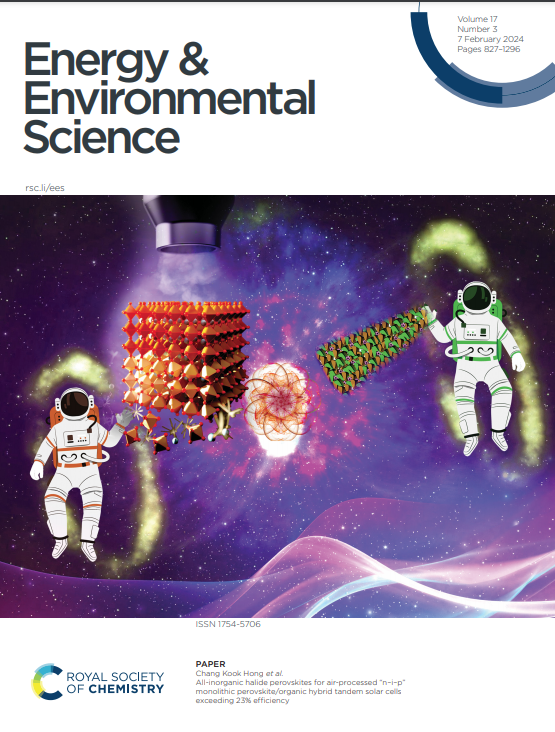Resting but Not Idle: Unveiling Mechanistic Origins of Resting Losses for Zinc Anodes
IF 30.8
1区 材料科学
Q1 CHEMISTRY, MULTIDISCIPLINARY
引用次数: 0
Abstract
Resting losses in aqueous zinc metal batteries (AZMBs) can exceed over 15% of anode capacity within hours; severe enough to cripple grid-scale deployment. These losses are reported to occur regardless of electrolyte (ZnSO₄, Zn(OTf)₂, ZnCl₂), current collector (Cu, Ti, Ni, C, stainless steel, Pt), temperature, or other conditions. This is widely attributed to the thermodynamic advantage of the hydrogen evolution reaction (HER, 0 V vs. SHE) over Zn/Zn²⁺ (–0.76 V vs. SHE), driving rapid dissolution of plated Zn on the current collector with spontaneous H₂ release. By contrast, analogous non-aqueous Li and Na systems show only a fraction of such losses, highlighting corrosion mechanisms unique to Zn. Understanding the mechanistic origins of capacity fading under resting conditions remains a major barrier and must be addressed to establish the design principles needed to mitigate high resting losses in AZMBs. In this work, we use fluorescence microscopy to reveal lateral propagation of cathodic current across current collectors, showing that spontaneous electron exchange occurs not only on deposited Zn but also on the current collector itself, substantially accelerating corrosion. Applying mixed potential theory, we show that electron transfer kinetics, thermodynamic reduction potentials, and concentration polarization collectively govern corrosion rates. We apply in-situ operando electrochemical mass spectrometry to precisely quantify resting corrosion rates and faradaic efficiencies, and our results clearly show that these rates vary by several orders of magnitude depending on the HER kinetics of the current collector. Mechanistically, our results show that galvanic corrosion extends beyond just the anode active materials, to the current collector and other coin cell components, including casings, spacers, and springs; whose catalytic activity toward HER exacerbates irreversible consumption of active Zn. We show that these hidden corrosion pathways operate under both resting and cycling conditions, explaining paradoxical HER observations during Zn stripping. By systematically linking deposited Zn, electrolytes, current collectors, and non-electrode components, this study unifies prior observations of resting corrosion, provides a mechanistic understanding of capacity fading origins, and establishes design principles to mitigate losses.静息而非闲置:揭示锌阳极静息损耗的机制起源
水锌金属电池(azmb)的静息损耗可在数小时内超过阳极容量的15%;严重到足以削弱电网规模的部署。据报道,无论电解质(ZnSO₄、Zn(OTf)₂、ZnCl₂)、集流器(Cu、Ti、Ni、C、不锈钢、Pt)、温度或其他条件如何,这些损耗都会发生。这被广泛地归因于析氢反应(HER, 0 V vs. SHE)优于Zn/Zn 2 + (-0.76 V vs. SHE)的热力学优势,驱动镀Zn在集流器上的快速溶解,并自发释放H₂。相比之下,类似的非水Li和Na体系仅显示出这种损失的一小部分,突出了Zn特有的腐蚀机制。了解静息条件下容量衰减的机制起源仍然是一个主要的障碍,必须解决这个问题,以建立减少azmb高静息损耗所需的设计原则。在这项工作中,我们使用荧光显微镜来揭示阴极电流在电流收集器上的横向传播,表明自发的电子交换不仅发生在沉积的Zn上,而且发生在电流收集器本身,大大加速了腐蚀。应用混合电位理论,我们发现电子传递动力学、热力学还原势和浓度极化共同控制腐蚀速率。我们使用原位操作电化学质谱法来精确量化静息腐蚀速率和法拉第效率,我们的结果清楚地表明,这些速率根据集流器的HER动力学变化了几个数量级。从机械上讲,我们的研究结果表明,电偶腐蚀不仅延伸到阳极活性材料,还延伸到集流器和其他硬币电池组件,包括套管、垫片和弹簧;其对HER的催化活性加剧了活性Zn的不可逆消耗。我们发现这些隐藏的腐蚀途径在静息和循环条件下都起作用,解释了锌剥离过程中矛盾的HER观察结果。通过系统地连接沉积Zn、电解质、集流器和非电极组件,本研究统一了先前对静息腐蚀的观察,提供了对容量衰减起源的机制理解,并建立了减轻损失的设计原则。
本文章由计算机程序翻译,如有差异,请以英文原文为准。
求助全文
约1分钟内获得全文
求助全文
来源期刊

Energy & Environmental Science
化学-工程:化工
CiteScore
50.50
自引率
2.20%
发文量
349
审稿时长
2.2 months
期刊介绍:
Energy & Environmental Science, a peer-reviewed scientific journal, publishes original research and review articles covering interdisciplinary topics in the (bio)chemical and (bio)physical sciences, as well as chemical engineering disciplines. Published monthly by the Royal Society of Chemistry (RSC), a not-for-profit publisher, Energy & Environmental Science is recognized as a leading journal. It boasts an impressive impact factor of 8.500 as of 2009, ranking 8th among 140 journals in the category "Chemistry, Multidisciplinary," second among 71 journals in "Energy & Fuels," second among 128 journals in "Engineering, Chemical," and first among 181 scientific journals in "Environmental Sciences."
Energy & Environmental Science publishes various types of articles, including Research Papers (original scientific work), Review Articles, Perspectives, and Minireviews (feature review-type articles of broad interest), Communications (original scientific work of an urgent nature), Opinions (personal, often speculative viewpoints or hypotheses on current topics), and Analysis Articles (in-depth examination of energy-related issues).
 求助内容:
求助内容: 应助结果提醒方式:
应助结果提醒方式:


